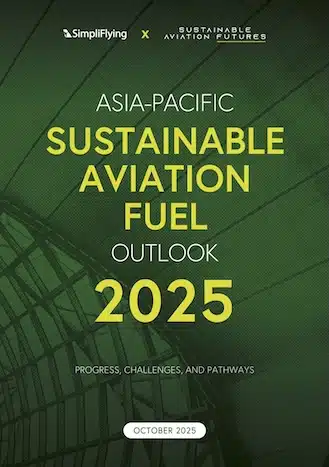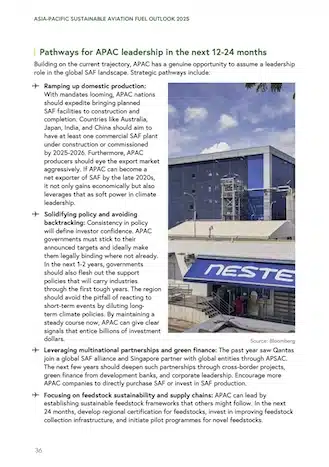REPORT
Asia-Pacific
Sustainable Aviation Fuel Outlook 2025
Pathways to Sustainable Aviation Fuel(APAC Edition)
Our report explores how APAC could become a major contributor to the global SAF supply, though achieving this requires navigating significant challenges in technology, policy coordination, and investment.
Introduction
The Asia-Pacific region is home to nearly 40% of global aviation traffic, making it central to any meaningful decarbonisation of air travel.
Historically, APAC has lagged North America and Europe in sustainable aviation fuel uptake, in large part because policy drivers and commercial initiatives were slower to develop here. However, the region has fundamentally shifted its approach to sustainable aviation fuel over the past year.
However, APAC’s importance is twofold: it is both one of the largest aviation growth markets (with passenger demand forecast to triple by 2045) and a region with vast feedstock resources (from used cooking oil to agricultural residues).
In 2025, APAC stands at a crossroads where it can transform from a passive consumer of others’ SAF into an active producer and leader in sustainable fuel.
In conjunction with the upcoming Sustainable Aviation Futures APAC Congress in Singapore, scheduled from 24 to 26 November 2024, we have prepared this comprehensive report to outline critical opportunities and challenges in the SAF industry.





Key takeaways
Why 2025 is a pivotal year
2025 is the year when planning turns into action for APAC: the first mandates and targets move from paper to practice, and the region must prove its market readiness.
Developments in the policy landscape
The policy map in APAC in 2025 is dramatically fuller than it was in 2024. Multiple countries have locked in start dates around 2026-2028 for blending requirements.
Key challenges
Despite substantial progress, the SAF industry in APAC and globally continues to face major challenges. These include high cost and commercial viability, scaling production and infrastructure to required volumes, feedstock and sustainability challenges, and political and market uncertainty

